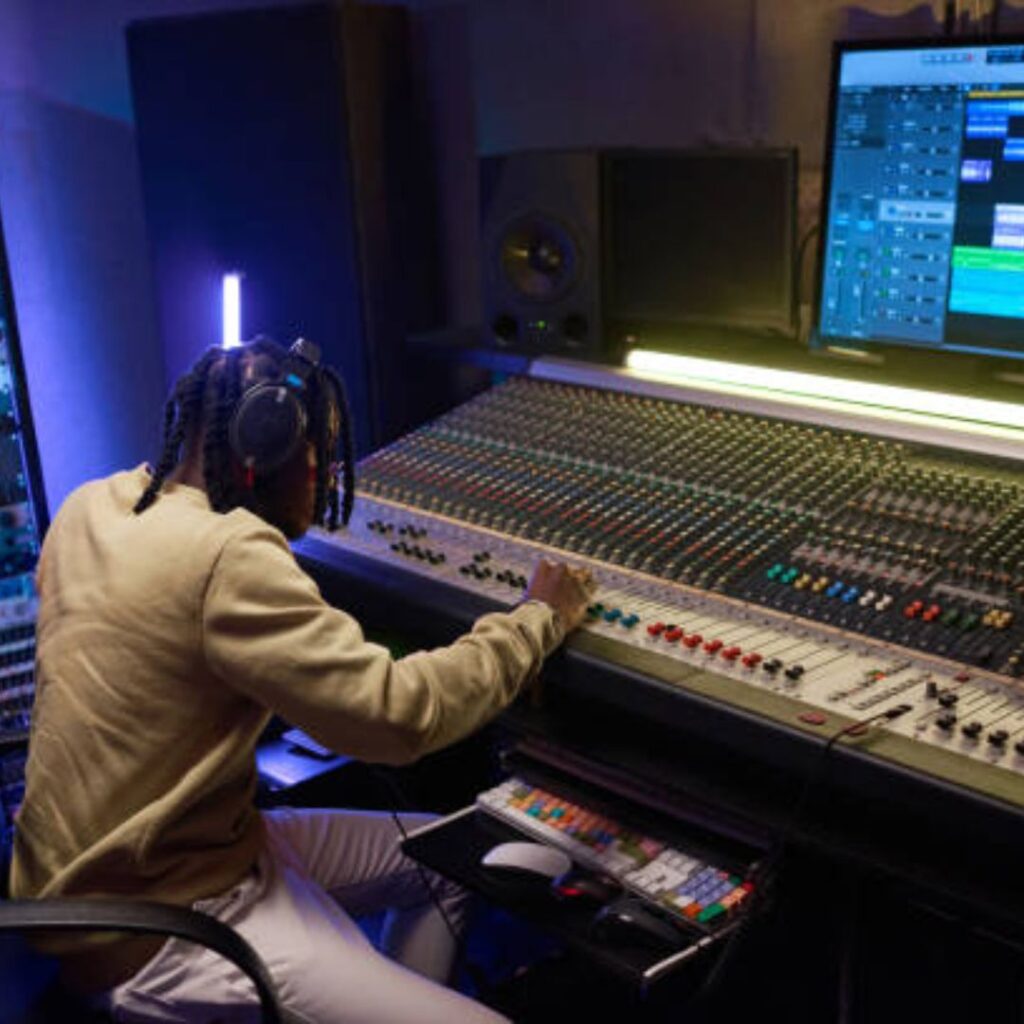Introduction
Music isn’t melody and lyrics—it’s rhythm, harmony, and sound mixed together to move the listener on a deep level. Behind each hit single is the craft of music production. Music production is where creativity, technology, and sound engineering converge to turn an idea into a finished track. No matter if you are a beginner thinking of recording or a developing pro, you need the fundamentals of sound and audio knowledge so that you could create efficient music.
All young artists nowadays are pursuing music production courses in Bangalore so that they are able to embrace this art career as technical training can yield good technical grounding along with exposure. Such a book is hence explained in plain terms so that even those without any formal training are able to learn the fundamentals.
What is Music Production
Music production is the deliberate process of creating, recording, editing, mixing, and mastering music. It is both the technical process—recording the instruments, sound creation, and final track completion—and the creative process—writing and composing.
It is up to the producer to see that this is done, executing the artist’s vision while achieving professional sound. Producers are typically technical experts and creative partners.
Steps of Music Production
- Song composition and Arrangement
A song is started with an idea—lyrics, melody, or rhythm. Artists set down the composition of the song in this step, i.e., verse, chorus, and bridge. Arrangement is how the instruments, voice, and rhythms are going to be mixed and layered so that the song is interesting.
- Recording
Recording entails the playback of voices and instruments. Artists can record instruments or voices straight to a computer through current digital audio workstations such as FL Studio, Logic Pro, or Ableton Live. Professional-quality recordings require microphones, an audio interface, as well as a quiet room.
- Editing
Editing cleans the recorded tracks by removing errors, tightening timing, and fixing pitch. That makes the music professional and clean before moving to mixing.
- Mixing
Mixing is where it all comes together. This is where levels are brought to equilibrium, sounds pan left and right, and effects such as reverb, delay, or equalization (EQ) are added. The intention is that all instruments and vocals need to sound great when combined but also sing in their appropriate positions.
- Mastering
Mastering is the last stage. It puts a clean, flat sound on the track and is ready to be delivered via streaming, the radio, or CDs. Mastering raises level, equalization, and overall clarity so the song will sound wonderful on any media.
Key Features of Audio & Sound Mastery
- Concept of Sound
Sound is vibration, and in sound production, control over these vibrations is most critical. The essentials are:
Frequency (Hz): Alters the pitch of a sound higher or lower.
Amplitude (dB): Alters the volume of a sound.
Dynamics: Relation of loud and soft sections of music.
- Equalization (EQ)
EQ enables you to boost or cut certain frequencies. Cutting low-end rumble on vocals cleans them up, and boosting bass frequencies gives a drum sound more punch.
- Compression
Compression molds the dynamic range of a track by reducing peaks in volume and accentuating softer material. This results in flat-sounding music that sounds professional.
- Reverb and Delay
Reverb and delay add space and depth. Reverb gives a sense of hearing a hall or studio recording to vocals, and delay gives echoes that add texture.
- Stereo Imaging
Stereo imaging widens a track by panning the audio to the left and right channels. It amplifies the music so that it sounds richer and more engrossing.
Music Production Tools
Digital Audio Workstations (DAWs)
The most important music production tool is a DAW. Some of the well-known DAWs are:
FL Studio – Suitable for beginners to produce and electronic music.
Ableton Live – Very useful for electronic music and live performance.
Pro Tools – Professional hardware standard in recording studios.
Co-operation also plays a tremendous role. The majority of the best songs have been created through co-operation between artists, producers, and sound engineers.
Twin Pitfalls of Music Production
Overproduction – Too much sound or effects on a track can suffocate.
Mixing Blunders – Instruments out of balance will render the song unlistenable.
Room Acoustics – Recording/mixing an untreated room can result in inferior sound.
Creative Blocks – There will be situations where all producers’ ideas don’t quite gel.
Practice, patience, and continued learning are keys to avoiding these pitfalls.
Beginner’s Tutorials
Simplicity: Use fewer bits of kit and learn your DAW.
Listen to Learn: Listen to professionally mixed tracks.
Experiment: Have fun experimenting with different sounds, effects, and styles without fear of doing anything wrong.
Practice Regularly: Music production is constructed through practice.
Get Feedback: Have others listen to your thing and hear what they have to offer.
The Future of Music Production
Music production is also evolving fast with technology. There are virtual instruments, plugins customized for personal use, and artificial intelligence that make it easier to produce great tracks at home than in the past. In addition, online collaboration makes artists work together from different parts of the globe.
With these technologies, professional development also increases. For instance, potential audio engineers usually go through sound engineering courses in Bangalore to acquire technical and creative expertise from the masters.
Even with such developments, the process of music production has remained unchanged—it is creativity, passion, and the ability to move people using sound.
Conclusion
It’s science, and it’s art. Script to completion, each step along the way makes the product that gets delivered to our ears. Sound and audio excellence isn’t necessarily about fancy gear—it’s understanding the basics, enjoying to fiddle with it, and continually refining your craft.
No matter what your dream is, if you wish to produce your own music, collaborate with artists, or even be a sound engineer, this book puts you in charge day one. Passion, dedication, and practice can turn music concepts into career-quality tracks that evoke feelings.



